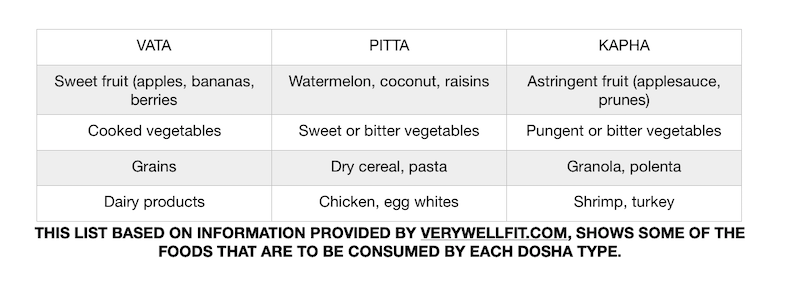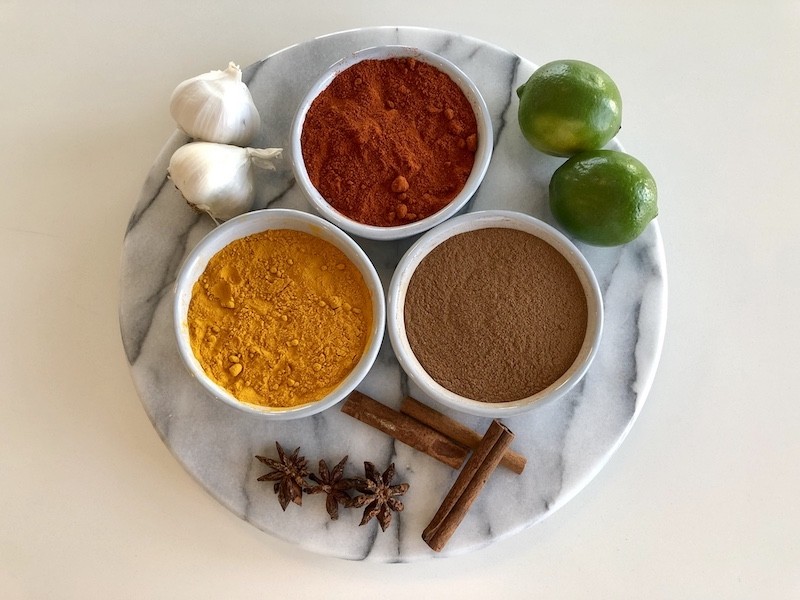For those who practice Ayurveda, diet is centered around individualized menus and eating is done mindfully.
Ayurveda (ai·yr·vei·duh) is a holistic health system originating in India thousands of years ago. The basis of the system is that health and wellness rely on the balance among the mind, body and spirit.
Christina Vargas is the founder of SimpleVeda: Ayurveda and Yoga in Dallas which offers personal consultations and workshops with activities such as yoga and cooking classes. Vargas said the balance can be achieved through understanding one’s own basic constitution or dosha which determines diet and lifestyle choices.
As a Pitta/Kapha dominant dosha, Vargas tends to stick to a vegetarian diet to avoid foods that are heavy and aggravate her Kapha dosha.
The three doshas are Vata, Pitta and Kapha and derive from the five elements and their related properties. Vata is made of space and air, Pitta of fire and water, and Kapha of earth and water.
According to the Yoga Journal, Ayurveda suggests six tastes should be included in one’s daily diet: sweet, sour, salty, pungent, bitter, and astringent
These tastes translate to different foods which are recommended to balance out one’s doshas to prevent problems caused by imbalance.

In general, the diet focuses on eating unprocessed foods in a mindful way.
When it comes time to eat, Vargas said she recommends taking a couple of deep breaths prior to taking the first bite.
“Carving out time for mindfulness will help with digestion,” said Vargas in a phone interview.
Vargas emphasizes that Ayurveda is a lifestyle and not a diet, but noted that food should be seasonal and focus on the five senses.Vargas often chooses to eat cooked, spiced vegetables which she turns into Buddha bowls that she makes with quinoa, lentils, and other ingredients.

“Our kitchen is our pharmacy,” she said.
Vargas switched her diet to an Ayurvedic one while she was becoming a yoga teacher in 2005, and she immediately noticed a change in her body and lifestyle.
“My skin cleared, I lost weight, and my energy was better,” said Vargas.
She attributes the change to cutting out meat, dairy, and processed from her diet.
Lewis Milbry, a personal trainer and nutritionist at the Dedman Center, thinks the Ayurvedic diet would be challenging to follow at first, but provides good guidelines specific to individual needs.
Some of the cons point out that it is difficult to find one’s dosha and at times the list of recommended foods can seem restrictive.
“Everything is on the list except for processed and fried foods which you shouldn’t be eating anyway,” said Milbry in his office at the Dedman Center.
In data compiled by the news organization PBS, 70 percent of rural India uses Ayurveda for their primary health care needs, but according to a study done in 2004 over 751,000 Americans had received an Ayurvedic treatment. This number has likely grown substantially.
Some of the downsides of the diet include that it can be difficult to find one’s dosa and at times the list of recommended foods can seem restrictive.
Natesa Vaidya, a junior at SMU majoring in Business Management and Spanish, says she thinks some aspects of the diet seem unrealistic. She believes the diet would be hard to implement in the American culture of packaged food.
According to a 2016 study done by the American Heart Association, highly processed foods contribute to almost 60 percent of calories in the American diet.
Despite the diet’s attempt to cater to different doshas, Vaidya also expressed concern over the uniformity of the diet.
“Everyone is different and no body is the same,” she said in a phone interview.
Vaidya said she would not try the diet herself because it is too limited, allowing only simple whole foods.
“No, because mostly I love food too much and I like to try new things,” said Vaidya.
Ritu Bhalla owns SukhVeda, an Ayurvedic Wellness Center in Dallas, which offers Ayurvedic and herbal therapies. She said her most popular service is her consultations to help clients identify their doshas. She determines each client’s dosha by asking questions and conducting an analysis of one’s pulse and tongue to diagnose conditions.
One’s dosha effects the course of action Bhalla prescribes, including diet and body treatments. Regardless of the patient, Bhalla recommends eating local, seasonal food that are prepared fresh daily.
“Every disease starts from the gut,” said Bhalla in a phone interview.
Madison Waggoner, founder of Shri Wellness in Colorado which offers cooking classes among its other services, also believes that the gut is responsible for most diseases.
Over the phone, Waggoner quoted Dr. Vasant Lad, a leader in the Ayurvedic community, saying, “Pay attention to your Agni (digestive fire) and you will be blessed with perfect health.”
The Chopra Center recommends paying attention to your Agni fire through meditation, daily movement, and by not overeating or eating when emotional.
Vargas says that she starts each day with warm lemon water to keep her digestive fire in balance.
Like Vargas, Waggoner believes it is important to sit down and be present while eating to aid in digestion. Many busy people forget to do this, eating on the run, or standing over the kitchen sink.
Waggoner understands that cooking can be hassle and has invented a product called the Veda Jar which has an accompanying cookbook. The jar serves as a mobile crockpot and helps make lunchtime easier by allowing one to cooking a hot and healthy meal in ten minutes.
One of the more traditional Ayurvedic dishes is kitchari which is intended to balance one’s doshas. Miriam Hahn, a health coach based in Phoenix, Arizona, provided a recipe for the dish which provides a variety of nutrients.
“It is made from rice, peas, yellow mung beans and spices,” said Hahn.
Hahn has recently incorporated Ayurveda into her weekly group coaching classes in which she teaches positive lifestyle habits. Hahn believes Ayurveda is a good alternative for many Americans who are overweight, ill, or tired.

Recipe courtesy of Miriam Hahn of youcare.selfcare. Photo credit: Summer Rye
“We have such a sick society,” said Hahn. “One in three people are obese.”
This is backed up by data from the Center for Disease Control and Prevention which states that the prevalence of obesity was about 39.8 percent in 2015~2016.
Hahn believes the practice has been slow to be adopted into the United States because of people’s reliance on doctors rather than themselves.
“We want to be handed a medication,” said Hahn.







